WHAT WE’RE WATCHING
Talking to director Jean-Jacques Annaud about ‘Notre-Dame On Fire’

We interviewed veteran director Jean-Jacques Annaud about his latest montage-thriller documenting the lesser-known but dramatic events around the 2019 Notre-Dame fire.
Notre-Dame: the most visited historical site in Europe; “a jewel of French gothic architecture”. In the opening minutes of the film, we soar above the iconic cathedral with heavenly music making the viewer feel like we’re basking in its grandeur. Savour this peace while you can – the set-up is driving the stakes higher before the drama we all came for. Director Jean-Jacques Annaud has created a classic disaster movie, and once the spark catches, you are going to feel the heat non-stop for about an hour and a half.
Notre Dame On Fire is a difficult film to classify in terms of genre. It’s a retelling of a true historical event, but not a documentary. The characters are almost exclusively actors, but the footage of the Notre-Dame fire is edited together using videos collected from civilians, police drones and even ex-president Emmanuel Macron’s personal cameramen. Most unusually, while we witness events unfold from dozens of different perspectives, there are essentially no “main characters”.
The interwoven anthology of nameless individuals creates the impression of a scattered army ambushed by a powerful foe – we are on the side of Paris as a unit rather than any individual, and each person’s experience is as valuable as another. Spreading the focus this widely has its drawbacks: with our attention torn between so many small narratives, it’s challenging for an audience to relate to the personal side of events because there’s no time to engage in character development as we’re more accustomed to.
Keenly aware of this obstacle, Annaud makes sure to distinguish each person clearly enough that even without knowing anything about them, not even their names, we remember each one, and the chaotic plethora of stories is remarkably unconfusing.
“… Usually a movie is a story of one person, woman, man, baby, or whatever. Here I felt that I could not do that – it was not honest to tell the story of one general or a fireman. Firemen are people who work together, so I said to myself, okay, it’s going to be the story of a group,” Annaud explains.
“I have to make sure to identify each of them separately in order to have a group of individuals that we care for. That’s a challenge, and some beginners in my business don’t know how to do it. Let’s say you only see this character three minutes after the beginning. How do you make scenes powerful enough for people to ask, what happened to him? I have to push the personality of each one a little bit. If I make it right, you can establish a character, and 10 minutes before the ending you will still remember him.”
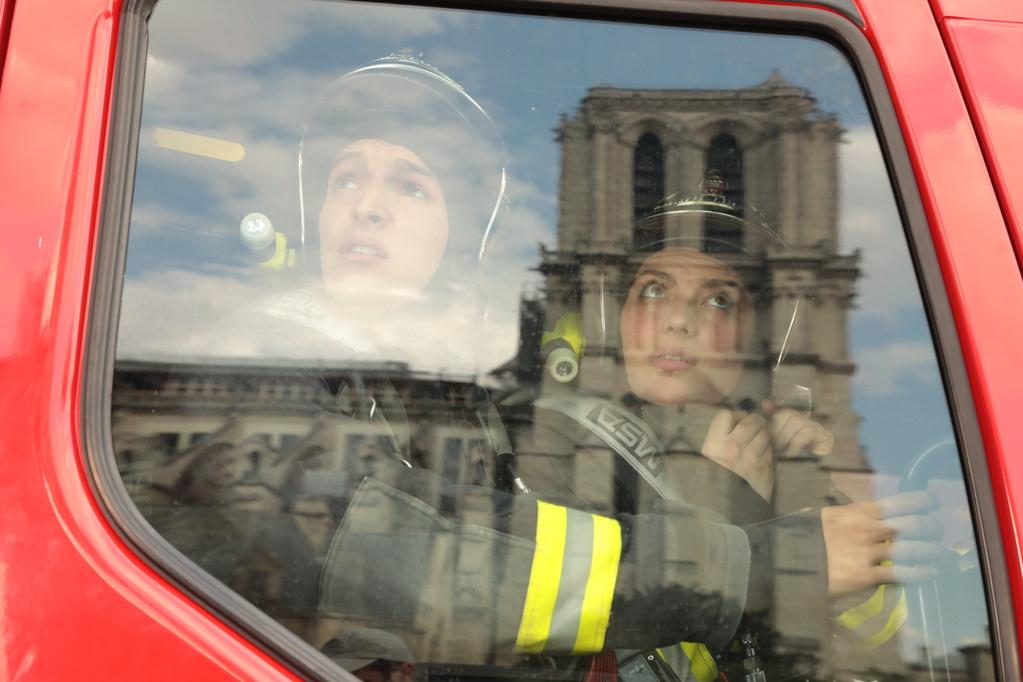
Firefighters look out of their truck at the Notre-Dame, reflected in their vehicle window. Production still from ‘Notre-Dame On Fire’. Image: courtesy of Universal Studios
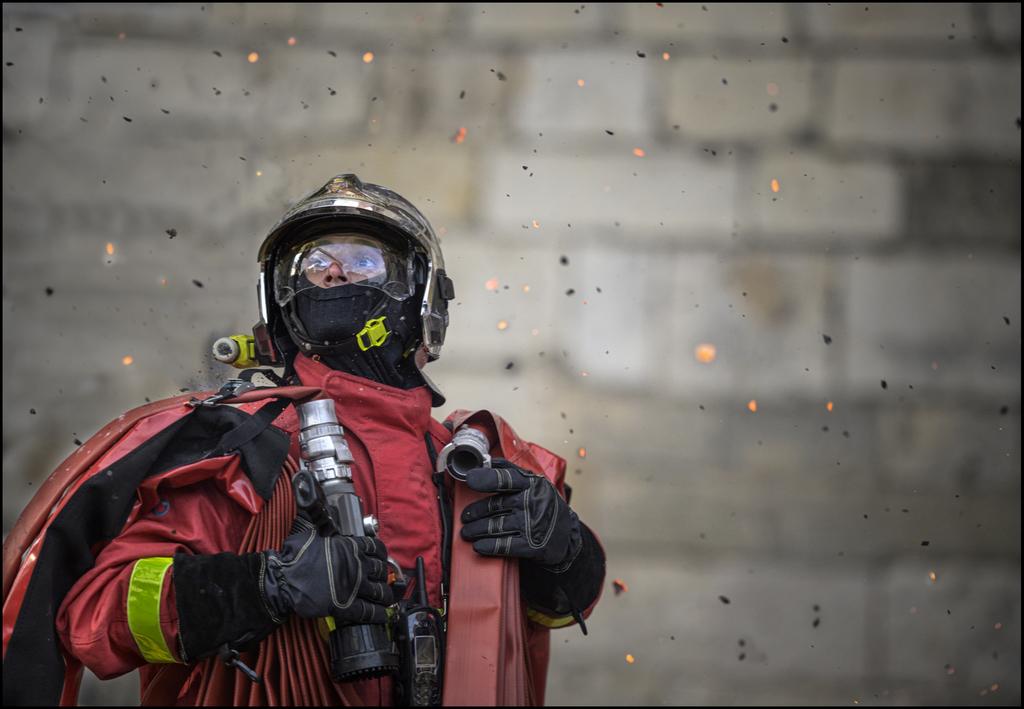
Fireman at Notre-Dame. Production still from ‘Notre-Dame On Fire’. Image: courtesy of Universal Studios
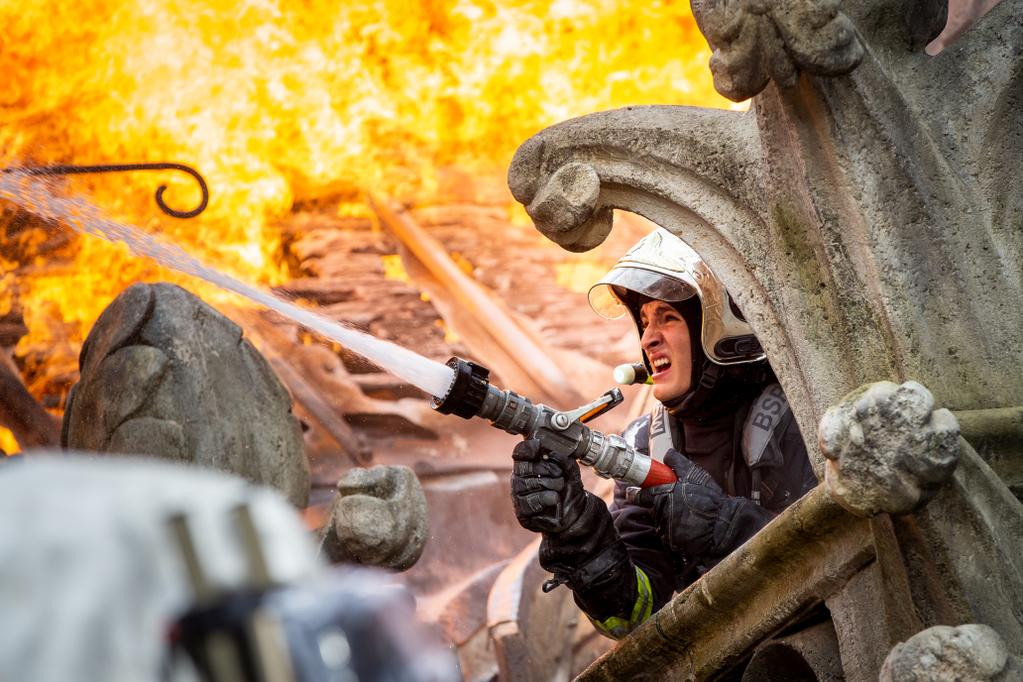
Fireman battles the blaze at Notre-Dame. Production still from ‘Notre-Dame On Fire’. Image: courtesy of Universal Studios
Seeing the fire escalate from so many perspectives also helps to mitigate blame on any one person or group, particularly the firemen. In the court of public opinion, firefighters tend either to be praised as selfless heroes or blamed for not being able to prevent disaster. It’s immediately clear that Annaud opts for the former when he introduces the first responders with about five consecutive shots of them sliding valiantly down the fire pole. What venerates them more effectively is seeing the obstacles they had to overcome just to get to the fire. You’re unlikely to leave the film blaming them for their slowness to respond – Annaud avoids placing blame on anybody at all.
He says: “With this kind of movie you could decide to blame [the people] or the police or the clergy or the system or… I think life is a little more complicated than that. Most accidents come from silly details that go wrong. It’s a famous thing with airplane crashes. So you go into a major drama through the accumulation of small details, and that makes it more human.”
The attention Annaud gives to these small details becomes a fiery avalanche of suspense. Early in the film, the fire is constantly foreshadowed by its sinister potential causes – a construction worker discarding a cigarette, a pigeon pecking at shoddy electrical wiring, or a gas leak… The verdict is still open on what ignited the blaze, and that uncertainty is drawn out for all it’s worth.
The alarm is always blaring, the ominous music doesn’t cease, and the impending calamity is so thick in the smoky cathedral that when it finally bursts into billowing flames it’s actually a relief – at least the characters can see where it is now. On this, Annaud explains, “I have acquired over the years certain rules. I was very aware that I had about 10 minutes before the fire because people will know that it’s about a fire.
“So after 10 minutes I show a little smoke, and the audience knows where it is, but now I have another 20 minutes of people trying to discover where is this fucking fire?! The main mistake from beginners is to tell the whole story right away. Then why should we see the movie? Never cut on an exclamation mark, cut on a question mark.”
The fire was a series of tiny unfortunate events with catastrophic consequences. Between each furious action scene are moments and hints of human error that portend the next mishap. A misplaced key, an accidentally closed door, a kink in a hosepipe, a faulty city-bicycle. Adding to the stress and intrigue, the audience can’t be sure which of these tiny screw-ups will be ruinous and which are false leads.
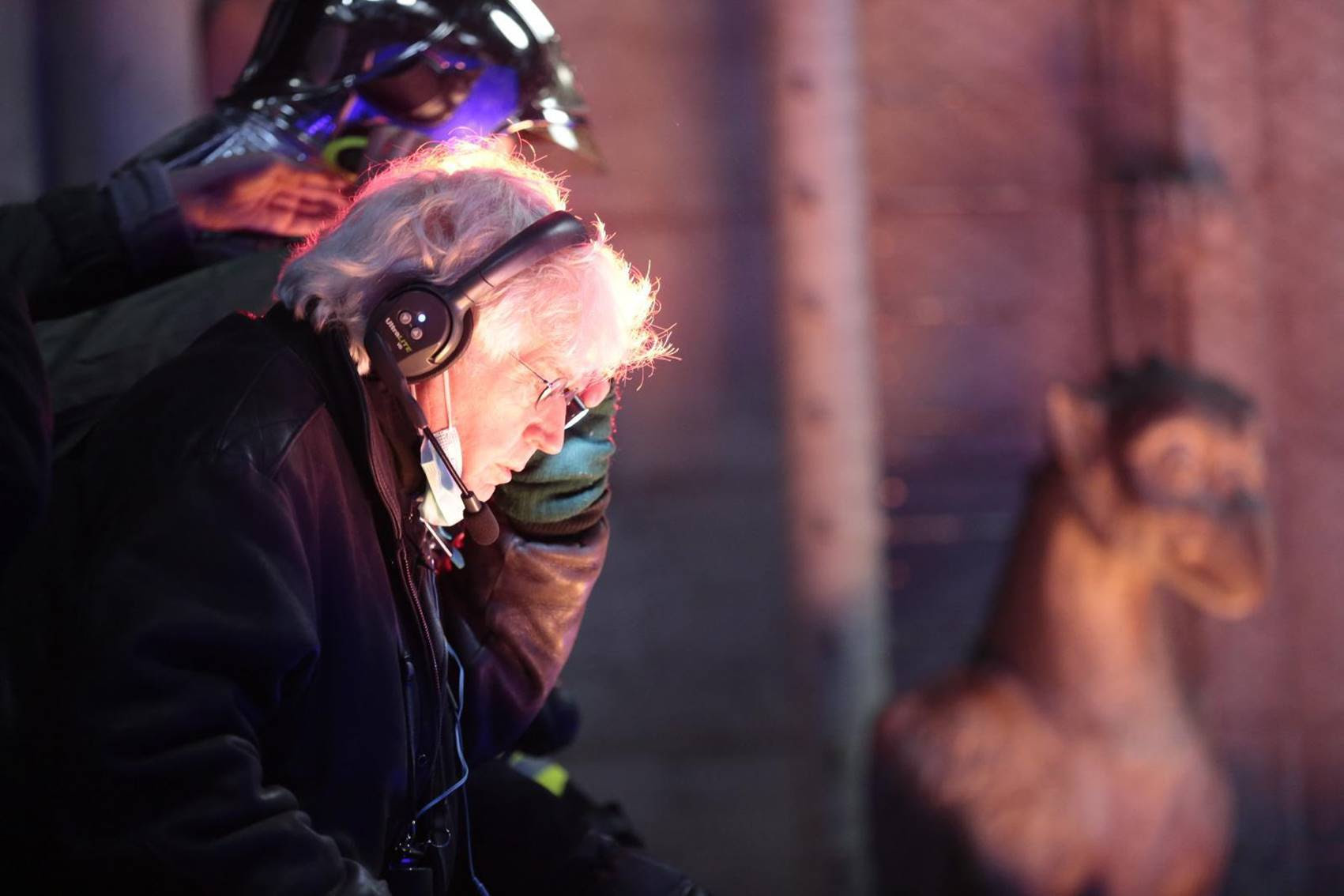
Jean-Jacques Annaud behind the scenes of ‘Notre-Dame On Fire’. Image: courtesy of Universal Studios
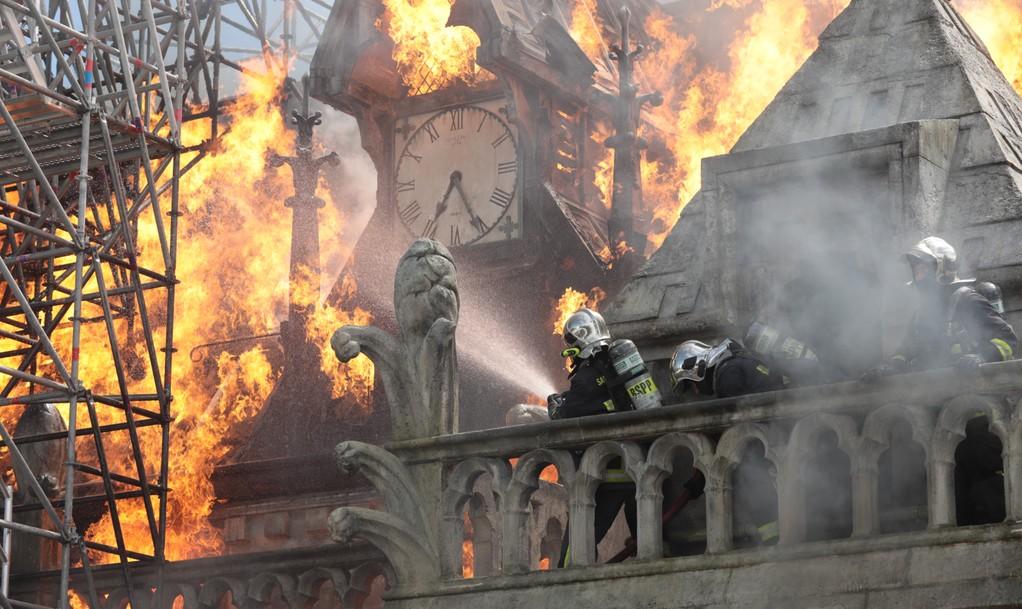
Firefighters battle the blaze at Notre-Dame. Production still from ‘Notre-Dame On Fire’. Image: courtesy of Universal Studios
The unrelenting twists are so unlucky that one would swear the whole thing has been drummed up to make a more exciting movie, but Annaud is a stickler for accuracy and that’s actually why he made the film.
“I sometimes have to warn the public. You are going to believe that it’s all invented because it’s not credible, but it’s true. When I heard the events unfolding on the radio, I felt it was written by a screenplay writer from Hollywood, because you had this beautiful French star, respected for 800 years, and you have the perfect villain. Hitchcock explained that you don’t have a good movie if you don’t have a good villain, and a good villain has to be charismatic, and photogenic. This is fire. And then you have the good doctors running to make sure that the star is not going to die.
“So of course I had the pain – it’s my district, I live nearby – but I remember reacting as a filmmaker first. And at that moment I didn’t even know the accumulation of events so bizarre that they’re almost comedic. I also didn’t know that the cathedral would survive, that no one would die, and that people would give a lot of money to have it restored.”
The film ends before the reconstruction efforts begin, steering clear of the controversy created by the massive amount of money that was donated to the cathedral’s restoration, which elicited a comparison with humanitarian efforts in developing countries. Annaud weighed in on these criticisms with the cynical stance that the reason so much money was donated to a building instead of suffering human beings boils down to visibility.
“My feeling is that people who invest in good causes want a return. When you give money to poor people in Ethiopia, what’s going to be the coverage? The coverage on Paris was huge… it’s a rather tragic answer.”
Despite Annaud’s admission that the donation of just under a billion dollars to a building rather than people in need is tragic, in the film itself there is a creeping reactionary tinge that inflates the importance of Notre-Dame due to its religious significance. The fight becomes focused on the religious artefacts rather than the building itself on the basis that “the cathedral can be rebuilt, the relics cannot”.
It seems unlikely that there was actually an equal dichotomy between the building and the relics – after all, it’s much easier to save little objects than a cathedral, but assuming it really was such a choice, the justification given for this decision in the film accomplishes two things: it prioritises the religious value of Notre-Dame (embodied in the relics) over its national significance (located in the building) and it makes it easier to portray the endeavour as a victory even if the entire building comes crashing down.
Religious symbolism is crucial to a viewer’s impression of this film. One man breaks down in tears and thanks god for saving a priceless artefact. Another runs into the burning building to save the Eucharists because he believes they are the living body of Christ. To viewers who don’t share their Christian belief, it may seem bizarre that someone would risk their life for crackers – the same can be said of Notre-Dame as a whole, which certain firemen volunteered to go on a suicide mission to save. Thus the film itself may be extremely dramatic or a little ridiculous depending on the viewer’s ideology.
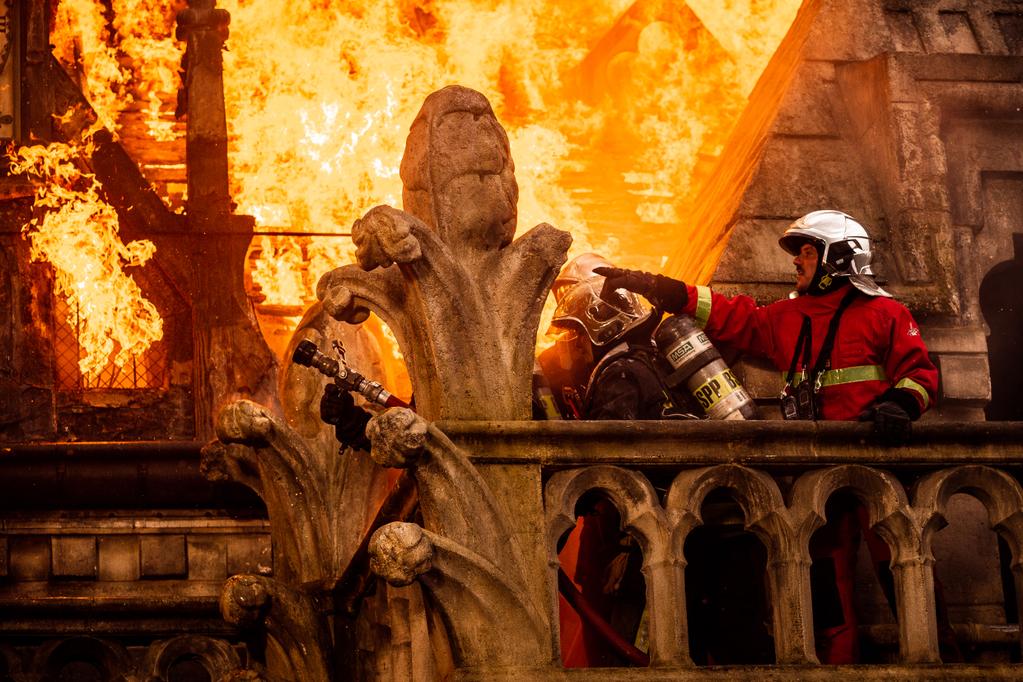
Firefighters battle the blaze at Notre-Dame. Production still from ‘Notre-Dame On Fire’. Image: courtesy of Universal Studios
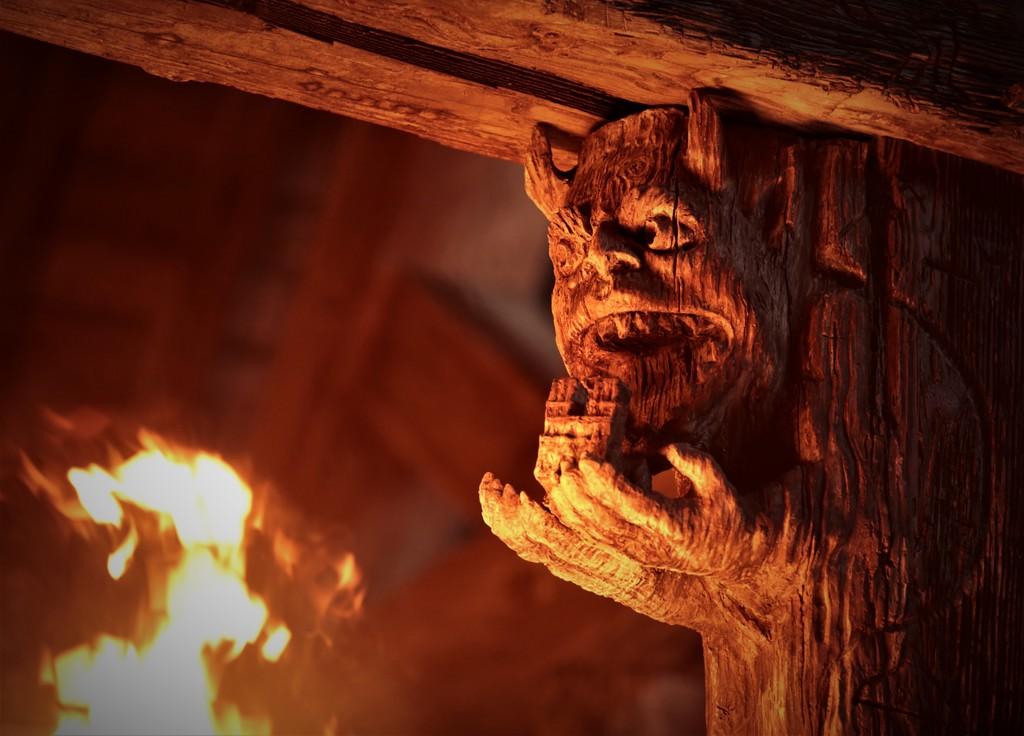
A gargoyle of Notre-Dame in the flames. Production still from ‘Notre-Dame On Fire’. Image: courtesy of Universal Studios
Notre-Dame On Fire is more politically and religiously charged than it cares to admit. Molten metal gushes from a gargoyle’s mouth while orange smoke bellows from his nostrils, evoking religious imagery of hellfire, a demonic writhing Goliath compared with the hard-hatted Davids with their hosepipes. The big screen is not quite big enough to hold the visual mass of Notre-Dame and the intensity of the fires that lick at it. Neither is the human capacity for stress, some might argue – with its split-scenes, rush sequences and fever-pitch pacing, the film is exhausting. It doesn’t ebb and flow; it ignites quickly and burns white-hot unceasingly until simmering down to ash. When the flames are finally quelled, we experience powerful relief.
The unusual format of the film, both in terms of pace and the number of characters, gives the impression that one hasn’t witnessed a story with a conclusion so much as a fascinating master class on the coincidental nature of disaster and a virtual tour of the ideological import of the Notre-Dame. DM/ML
Notre-Dame On Fire is available in South Africa in cinemas.
You can contact We’re Watching via tevya@dailymaverick.co.za
In case you missed it, also read Winter on Fire: Ukraine’s Fight for Freedom now on YouTube

















 Become an Insider
Become an Insider
Comments - Please login in order to comment.